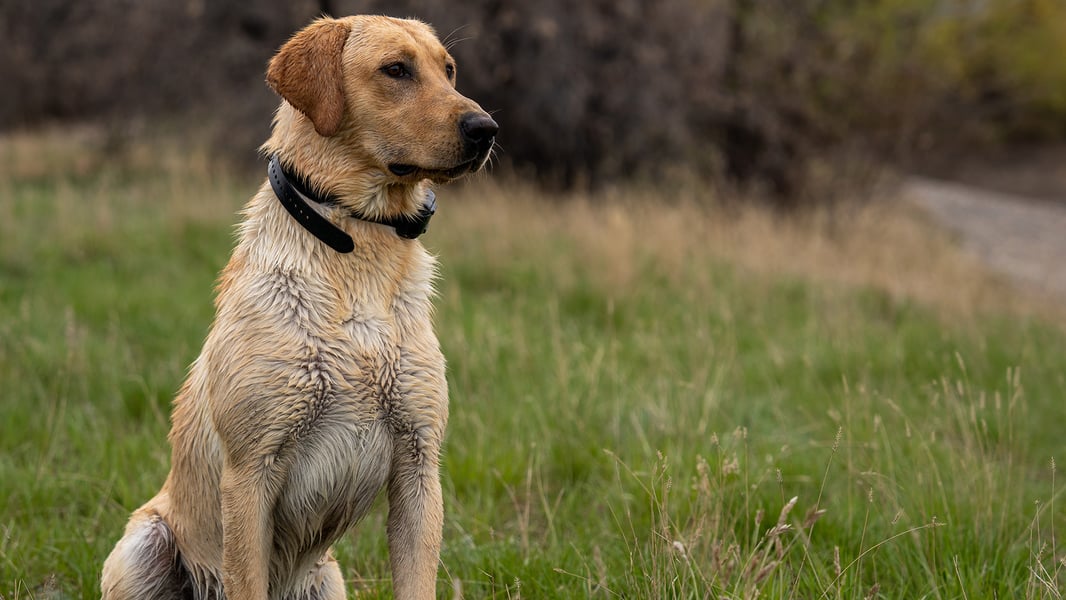Preseason and In-Season Dog Drills
By Chad Carman
For some of us hunting season is upon us but that doesn’t mean we can let off the gas with our training. Even seasoned dogs need to be worked between hunts to stay sharp. Chad Carman dives into drills we can all be doing with our dogs to keep them tuned up and ready to go whether we’re in the peak of our hunting season or just getting started. – Todd Helms
Pre-season Drills for Your Duck Dog
You wouldn’t expect LeBron James to show up for the first game of the season without pre-season practice, so why do you expect the same out of your dog? Implementing one or two days a week of summer exercise, steadiness, and basic drill work will help ensure your pup is sharp and ready to go on opening morning so you can focus on the hunt. After all, hunting often creates problems, and training solves them.
Obedience
I like to start off most sessions with the boring stuff that many professional handlers call “yard drills.” These consist of walking at heel, sit (meaning stay), down, up, kennel (or hide), place, or any other pertinent commands you may use in the field this season. If your dog can’t do them consistently in your backyard, how can you expect them to do it in the field prior to a hunt? I can’t tell you how many times I’ve been on a hunt with a buddy’s dog who has never been in a mutt hut. The situation turns into a complete disaster because the dog is standing halfway out of the hut while birds are flaring, I mean, decoying in. Whatever you expect out of your dog—be it riding in a boat, on a 4-wheeler, walking at heel for long distances on a refuge, or anything else you might see on opening morning—should be rock solid before the season starts.

Steadiness
This should go without saying, but the quickest way to ruin a hunt is by having a dog that breaks or doesn’t listen to anything you say. I’m a firm believer that using any sort of leash, tie down, etc., during the hunt is a terrible crutch, dangerous, and the sign of a lazy handler. One of my favorite ways to start small on steadiness is by standing next to my dog on a place board and throwing bumpers in all different directions. The place board establishes a clear limitation on movement. If there is any unwanted behavior—whining, breaking, or too much movement on the place board—you can walk out and pick up the bumper to deny the retrieve. I’ve found denial to be a far better motivating factor for steadiness than any type of force. Call me a softy. Once your pup acts how you want, release them. Or if you want to spice it up, make them wait for varying intervals before sending them. Hopefully, if you’re considering hunting with your dog, this should be a relatively easy drill. Once you’re happy with the result, add in a duck call, a shotgun with blank poppers, or even take turns with another hunting partner’s dog by honoring to add in distractions. Always confirm your dog is 100% rock steady to your standards before adding in any other distractions, and don’t be afraid to take away distractions if your dog starts losing it.
Stamina
Now is the time to build up some endurance for your pup. Start small by implementing the steadiness drill above, then expand that into what are often referred to as poor man singles. Leave your pup on a place board and start extending the retrieves out to 50-100 yards, varying the distances regularly. It’s OK to occasionally mix in a really long retrieve if you want, but I like to keep them at realistic hunting distances. If your dog knows how to remote place (an awesome skill set for any dog to have), you can implement what is referred to as the Y-Drill, which can not only build stamina but drastically help your dog’s marking ability. Remember, however, that distance isn’t the only thing that makes retrieves tough. You can vary it by throwing in tall grass, behind bushes, in and out of water, and much more.

Blind Work – Lining Drills
Google retriever lining drills, and there’s no doubt you will come up with dozens of different images, videos, and blog posts about the favorite “lining” drills for a dog to run consistently straight lines. This is one concept you’ll need to evaluate your pup on to know where they fall short. If they lack momentum, try putting together a long ladder drill with 5-7 bumpers spaced 10-20 yards apart in a ladder away from you. Your dog will pick up the one starting 20 yards from you, then the next further one, and the next further one, and so on. This is great for establishing confidence to keep running in a young dog. If you and your dog are often “misaligned,” that is, your dog starts out in a direction other than what you expected, the bumper lining drill may be great for you, or even the Helter Skelter drill, wherein you take a handful of bumpers, throw them out scattered amongst a field, and alternate moving your dog left and right until they’re aligned on the one bumper you have in your mind. This advanced drill forces them to lock in on a specific bumper and ignore all the others around them. Don’t do it unless you’re extremely confident in your dog’s ability to handle.

Blind Work – Casting Drills
Lastly, a surefire way to impress all your buddies and ultimately get more birds back to the blind quickly is by having a dog that takes deliberate casts exactly where you want them. After you’ve reviewed proper casting techniques online (seriously, take the time to do it), take a look at the walking baseball drill. You simply set your dog facing you, toss a bumper in any direction you want them to cast, then cast your dog to it. Once they’ve perfected that, you expand on it by throwing two bumpers in alternate directions, walking away from them, and casting the dog to the bumper of your choice (usually the first one thrown, casting away from the bumper you just threw). Then you set your dog facing you, walk away from them, and toss another bumper to an alternate direction from the bumper still in the field. This not only helps build confidence but also trust to cast towards any weaknesses your dog may have.
Practice like you play
Ultimately, your goal here is to start slow and work up to everything you expect to see in your hunting situations prior to seeing it in the field. For younger dogs, that includes setting up decoys, firing poppers, blowing duck calls—the works. The closer to a simulated hunt you can do, the better. It’s much easier to sharpen a skillset and get your dog in shape in a controlled environment than with the chaos of hunting in the field. Your dog will be in shape, less prone to injury, and ultimately perform at its best so you can enjoy watching your well-oiled machine work.








